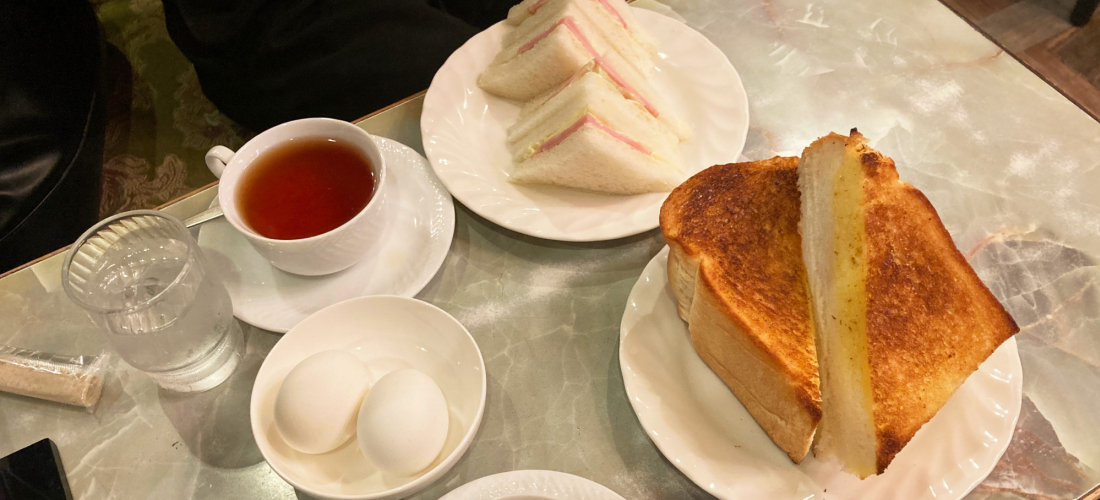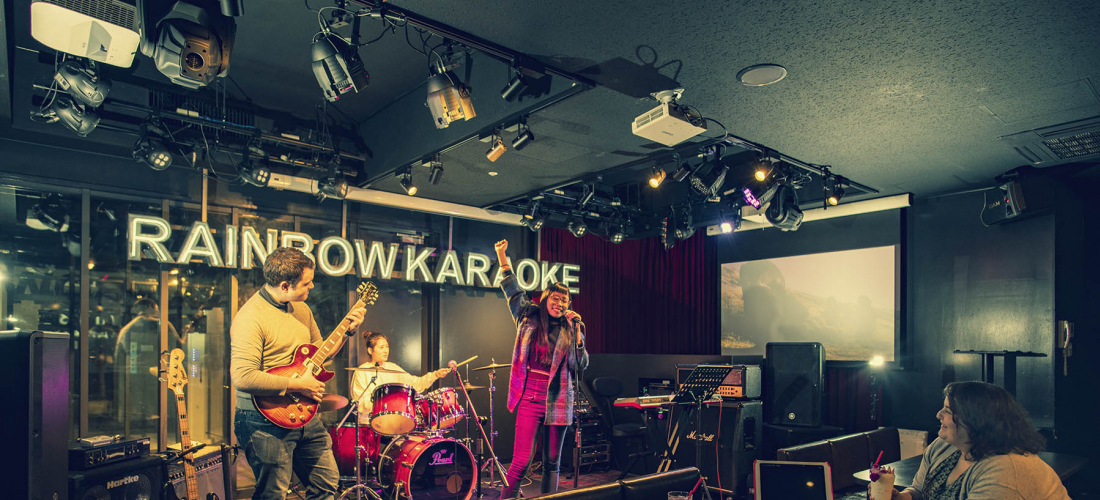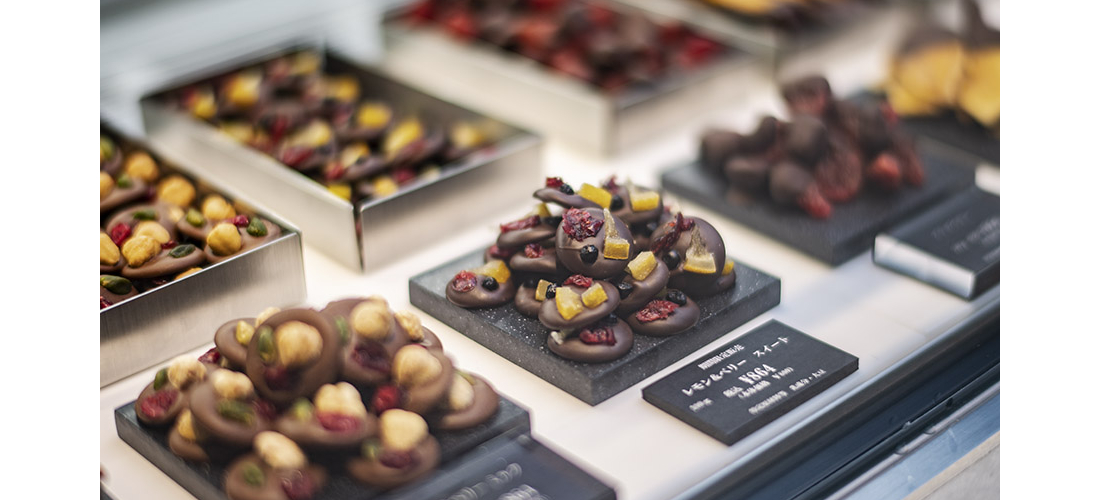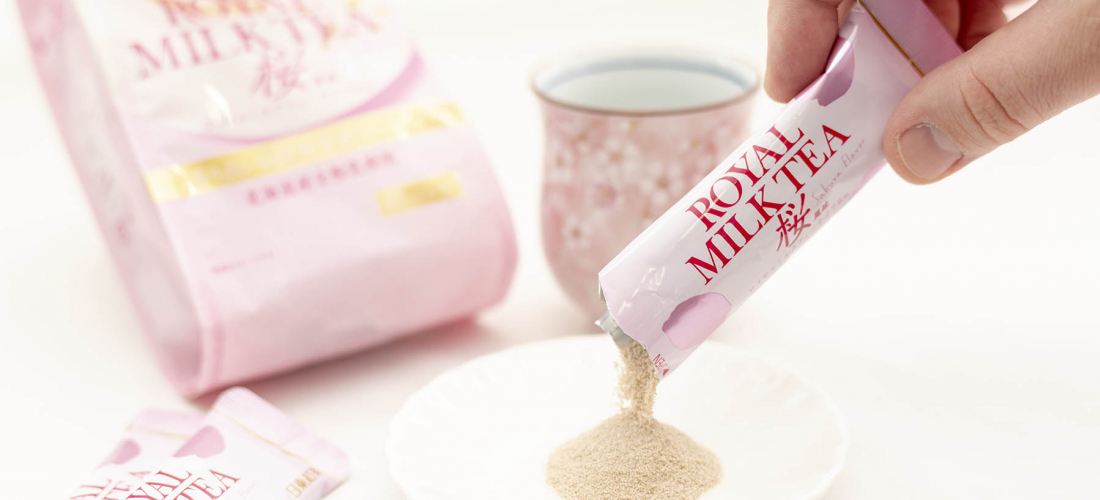Ahhh, Kyoto. City of temples, shrines, quaint traditional alleys and… cafes? That’s right, this old-fashioned city continues to grow and expand as time moves forward, and part of that has been a boom in cafe culture. Spend some time downtown, especially around Sanjo Street (a gathering place for the young and chic, just north of the major Shijo Street) and you’ll find a wealth of cool places to stop in, plop down, and a good cup of tea or coffee with maybe a bite to eat. It’s a great place to find well-brewed coffee, satisfying tasty lunches, and sweet snacks perfect for an afternoon pick-me-up. After living in the Sanjo area for more than a year, I’ve got some recommendations!
Tucked down a tiny narrow alley, Cafe Quarirengue is a true hidden gem. Search this place out, and dish out a little extra cash, and you'll be rewarded by great coffee and yuzu drinks, accompanied by possibly the best cake in Kyoto. Such a statement is of course subjective, but if you've been craving a good slice of rich chocolate cake, this is the place.
A seat near either the front or back windows will provide you with calming views of the stone-paved alleys, amply decorated with trees and other greenery. Sit down with a friend for a while and luxuriate in the cake and coffee!
Cafe Quarirengue
74-4 Yanagihachimancho, Nakagyo-ku, Kyoto
11:30 – 18:00 (L.O. 17:00)
Closed: Tue, Wed
Image Source: Official Website
There are a few different Sarasa restaurants around Kyoto, although they're all a little different. Each of them has a unique charm, and some tasty offerings. Sarasa Pausa is clearly popular with the cool, young crowd, but the seating area decorated with an eclectic variety of items is a comfortable place for people of all ages to sit down for lunch or a cup of coffee.
It's a great place for a quick meal, and the central location off of Sanjo Street (and just blocks from the Shijo Kawaramachi area) makes it easy to stop into. Their daily lunch sets are a fairly reasonable deal, with big plates piled with main dishes, varying sides, and always a nice salad. You can see from my pictures that they obviously make some good karaage (唐揚げ, Japanese fried chicken), which is always one of the lunch options. Outside of lunch hours they still offer good coffee and drinks, and a selection of Sarasa baked goods. Sometimes that means fresh beignets or a slice of cake, and they always have a selection of cookies around. You can always grab some of the baked goods on your way out, as well!
Sarasa Pausa
38-1 Benkeiishicho, Nakagyo-ku, Kyoto
11:30 – 22:00 (L.O. 21:00, Lunch ~14:00)
Closed: Mon
In business since 1940, Inoda Coffee is a local Kyoto operation, with 9 branches spread around the city, and another handful across Japan. Entering any of their larger locations feels a little like walking into an old-fashioned, high-class hotel. As they put it, their strong coffee has "a long history of refinement in both production technique and dedicated skill of our artisanal coffee roasters," and they offer a few different coffee blends and roasts (not very common in Japan). For a very classy breakfast, or afternoon coffee accompanied by a slice of (honestly… so-so) cake, head to their main shop or their Sanjo branch (which are actually around the corner from each other).
Image Source: Official Website
The main shop has a few different seating areas, but the Sanjo branch (right) has a welcoming, open storefront, and seats with a nice view out onto the street. Do beware, Japan still allows smoking in restaurants, and Inoda Coffee caters to an older crowd – so lots of their seating is in smoking areas. But a visit to either spot will get you a solid cup of coffee!
Inoda Coffee
Main Shop: 140 Doyu-cho, Sakaimachi-dori, Sanjo kudaru, Nakagyo-ku, Kyoto
7:00 – 19:00
Sanjo Shop: 69 Masuya-cho, Sanjo-dori, Sakaimachi Higashi-iru, Nakagyo-ku, Kyoto
10:00 – 20:00
Climb up a flight of stairs, open a creaky old door, and you've arrived at Cafe Kocsi. This little cafe is known for excellent bread, so a sandwich with your tea or coffee isn't a bad idea. They also offer some more robust food options, along with sweet bready snacks.
The most noticeable aspect of the cozy atmosphere is probably the shelves and shelves of books, which separate seating sections and line the counters. For those working on their Japanese, an hour or two browsing the selection and paging through a few choice volumes makes for a pretty pleasant afternoon. Of course, you can always bring a book of your own to read while you relax there, instead.
Cafe Kocsi
123 Fukunagacho, Nakagyo-ku, Kyoto
Mon~Wed: 15:00 – 23:00/Fri~Sun: 12:00 – 23:00
Closed: Thu
This French boulangerie/patisserie has a long history in France, and now is a popular chain in Japan, with a couple dozen locations country-wide. The spot on Sanjo Street is certainly one of the most charming, however, with a French cafe vibe and a view of the lovely red brick Museum of Kyoto next door. One look on social media will show you that their chocolate-dipped elephant ears are a big hit, but they've got a nice selection of French baked goods, both savory and sweet. I've always been a big fan of their breakfast and lunch sets, which come with baked goods and your choice of tea or coffee. During lunch they set up a table with a little bread buffet, giving you a basket with many of the lunch sets so that you can eat all the crusty, fresh, delicious bread your heart desires. If textureless Japanese bread is driving you a little crazy, a lunch visit to Paul might remedy that.
Paul is pretty popular, but with a little luck there's usually a table or two open. If the place is really packed, your heart isn't really set on French baked goods, and you just want a tasty meal, you can always head to CoLLabo upstairs! Paul sits on the ground floor of a multi-story building called Ducemix, which is home to quite a few interesting businesses. Wander up a few floors and you'll find artisan workshops, small gift shops, and Gallery Cafe & Bar CoLLabo, another solid cafe.
Image Source: CoLLabo Official Website
I always found CoLLabo to be a little lacking when compared to the other cafes in the surrounding area, but the place isn't bad, and it has some Japanese cafe classics. If you visit, make sure to grab a seat by the window for another nice view of the Museum of Kyoto!
Paul
53 Masuyacho, Nakagyo-ku, Kyoto
8:00 – 20:00
CoLLabo
Ducemix Bldg. 3rd Floor, 53 Masuyacho, Nakagyo-ku, Kyoto
11:30 – 23:30
Closed: Mon
Excellent Mochi & Dango Right Nearby
Just a stall stuck in the side of a building, with a small stool or two, you can't exactly call this place a cafe… but Kyoto is the home of mitarashi dango, my favorite Japanese sweet, and this shop makes some of the best!
Mitarashi dango are chewy rice dumplings, usually toasted on a grill and then dipped in the vitally important sauce, a sweetened and slightly caramelized soy sauce concoction. If you've ever enjoyed salted caramel, you might get why this stuff is so delectable. The shop that claims to be the original creator of mitarashi dango is further north in Kyoto, near Shimogamo Shrine, but my favorite little hole in the wall is right off of Shijo Street (a few minutes walk south of Sanjo Street, where the cafes are clustered).
You can't see it on google maps (not even street view), but follow the map above, walk into what looks like a shoe shop on Shijo Street and you'll see a path into the back alley, where this salty-sweet treat awaits you. They'll make them fresh for you, and serve the dango with a little cup of tea for you to enjoy right then and there. You can also grab a few premade mochi delights to take home.
Details
NAME:Kyoto Sanjo
MAP
Half a lifetime ago I came to Japan for a semester abroad... and I never left. I guess I really like the place! I spent my first few years in Japan living in the middle of nowhere, so I'd love to hear your Tokyo recommendations via Japan's social media accounts!
COMMENT
FEATURED MEDIA
VIEW MOREMAP OF JAPAN
SEARCH BY REGION

LATEST
VIEW MOREEVENT CALENDAR
VIEW MOREMOST POPULAR
 Tokyo Winter Recommendation: Don’t Miss Tokyo Mega Illumination, Japan’s #1 Light Show
Tokyo Winter Recommendation: Don’t Miss Tokyo Mega Illumination, Japan’s #1 Light Show ป้ายยาสินค้าน่าซื้อในร้านขายยาญี่ปุ่น | KOWA ผลิตภัณฑ์เพื่อสุขภาพสำหรับคนยุคใหม่
ป้ายยาสินค้าน่าซื้อในร้านขายยาญี่ปุ่น | KOWA ผลิตภัณฑ์เพื่อสุขภาพสำหรับคนยุคใหม่ Okinawa Family Road Trip: Japanese Glasses Shopping at San-A Urasoe West Coast PARCO CITY, Discount Coupons, & Okinawa Sightseeing with JINS
Okinawa Family Road Trip: Japanese Glasses Shopping at San-A Urasoe West Coast PARCO CITY, Discount Coupons, & Okinawa Sightseeing with JINS

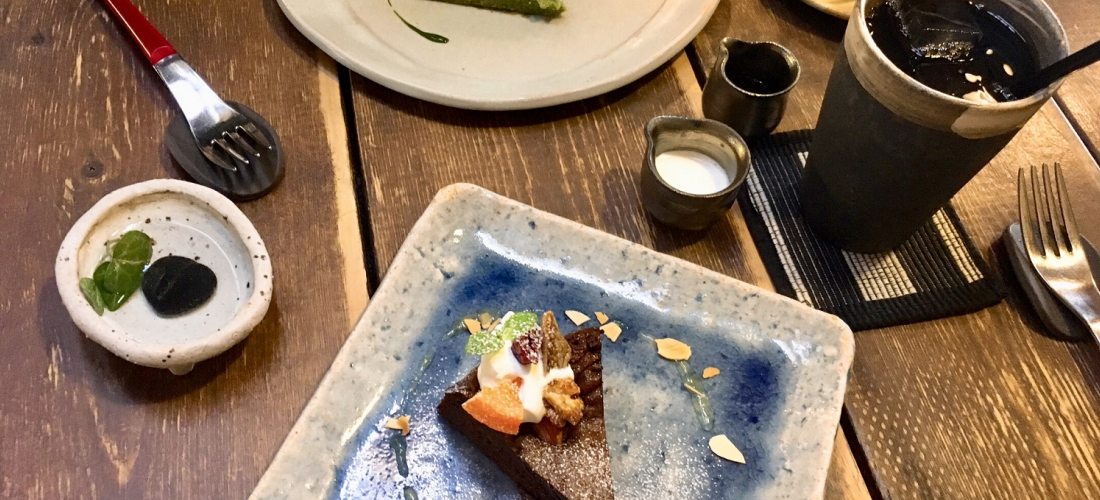


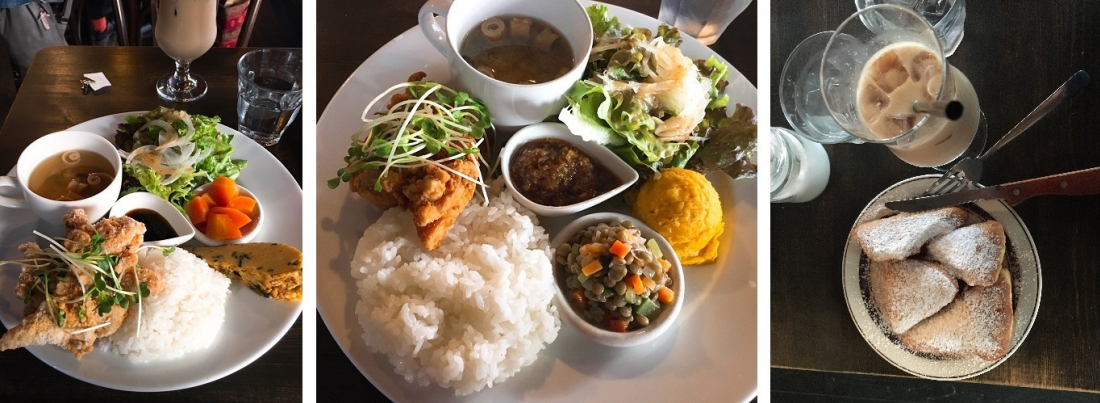








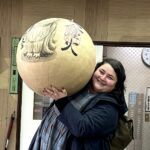



 >> Find out more at Japankuru.com! (link in bio)
#
>> Find out more at Japankuru.com! (link in bio)
#





 The Robot Restaurant is gone, but the Samurai Restaurant is here to take its place. Check it out, and don't forget your coupon!
The Robot Restaurant is gone, but the Samurai Restaurant is here to take its place. Check it out, and don't forget your coupon!
 신주쿠의 명소 로봇 레스토랑이 사무라이 레스토랑으로 부활! 절찬 쿠폰 발급중
신주쿠의 명소 로봇 레스토랑이 사무라이 레스토랑으로 부활! 절찬 쿠폰 발급중
 18歲以上才能入場的歌舞秀,和你想的不一樣!拿好優惠券去看看~
#tokyo #shinjuku #samurairestaurant #robotrestaurant #tokyotrip #도쿄여행 #신주쿠 #사무라이레스토랑 #이색체험 #할인이벤트 #歌舞伎町 #東京景點 #武士餐廳 #日本表演 #日本文化體驗 #japankuru #japantrip #japantravel #japanlovers #japan_of_insta
18歲以上才能入場的歌舞秀,和你想的不一樣!拿好優惠券去看看~
#tokyo #shinjuku #samurairestaurant #robotrestaurant #tokyotrip #도쿄여행 #신주쿠 #사무라이레스토랑 #이색체험 #할인이벤트 #歌舞伎町 #東京景點 #武士餐廳 #日本表演 #日本文化體驗 #japankuru #japantrip #japantravel #japanlovers #japan_of_insta
 코지마 x 빅 카메라 쿠폰으로 일본 가전 제품 쇼핑하기
#pr #japankuru #japanshopping #kojima #biccamera #japaneseskincare #yaman #dji #osmopocket3 #skincaredevice #日本購物 #美容儀 #相機 #雅萌 #日本家電 #일본여행 #면세 #여행꿀팁 #일본쇼핑리스트 #쿠폰 #일본쇼핑 #일본브랜드 #할인 #코지마 #빅카메라 #japankurucoupon
코지마 x 빅 카메라 쿠폰으로 일본 가전 제품 쇼핑하기
#pr #japankuru #japanshopping #kojima #biccamera #japaneseskincare #yaman #dji #osmopocket3 #skincaredevice #日本購物 #美容儀 #相機 #雅萌 #日本家電 #일본여행 #면세 #여행꿀팁 #일본쇼핑리스트 #쿠폰 #일본쇼핑 #일본브랜드 #할인 #코지마 #빅카메라 #japankurucoupon































 Oita Hello Kitty Airport
Oita Hello Kitty Airport  Lands April 13th
Lands April 13th









